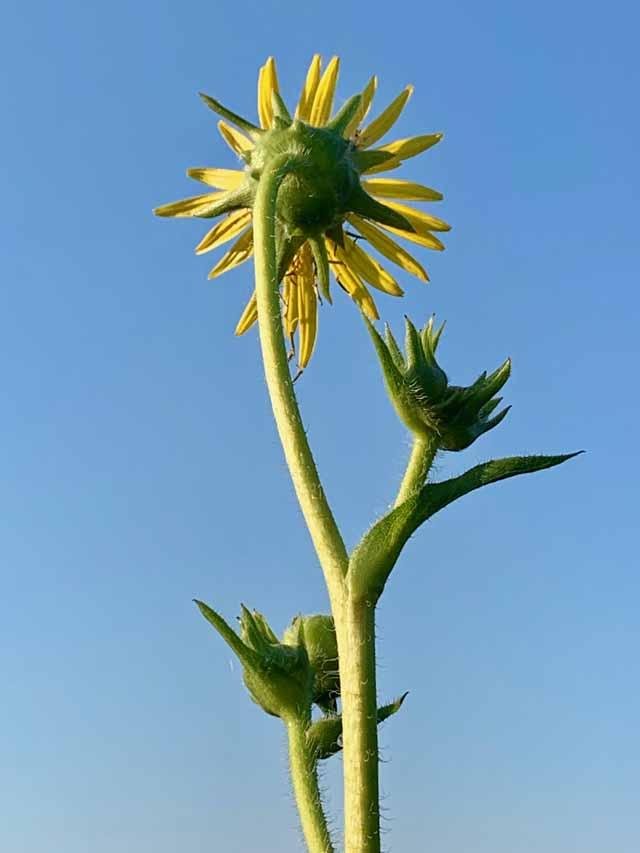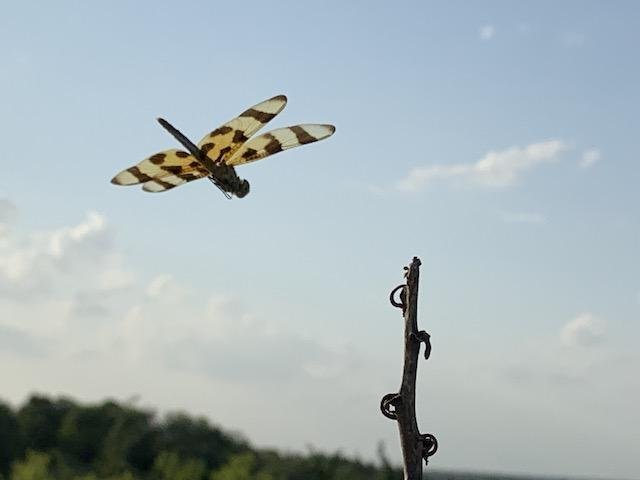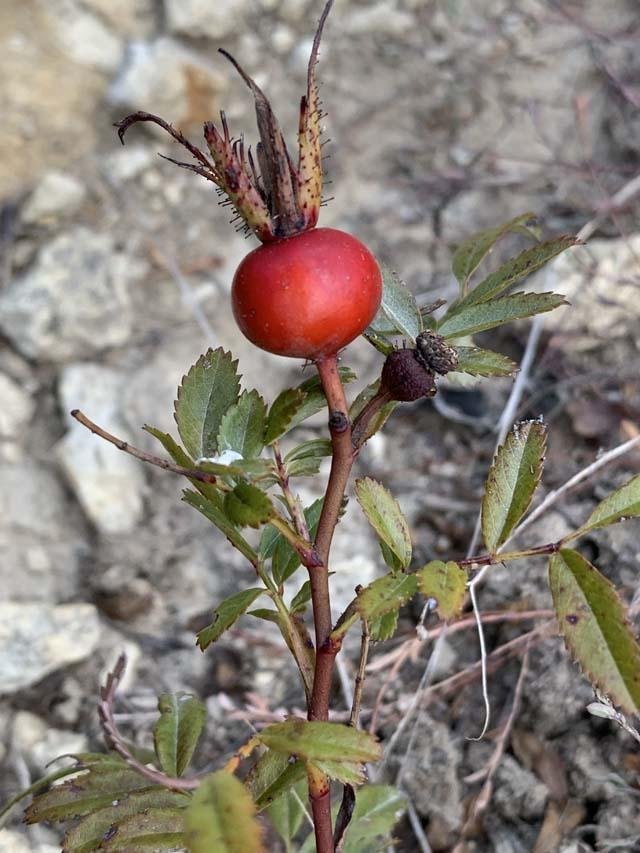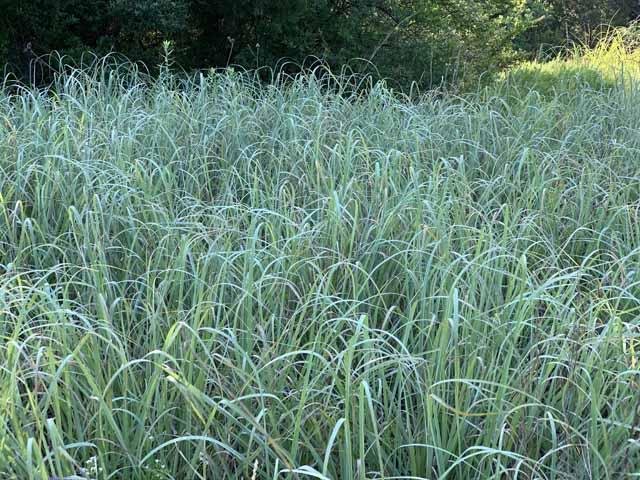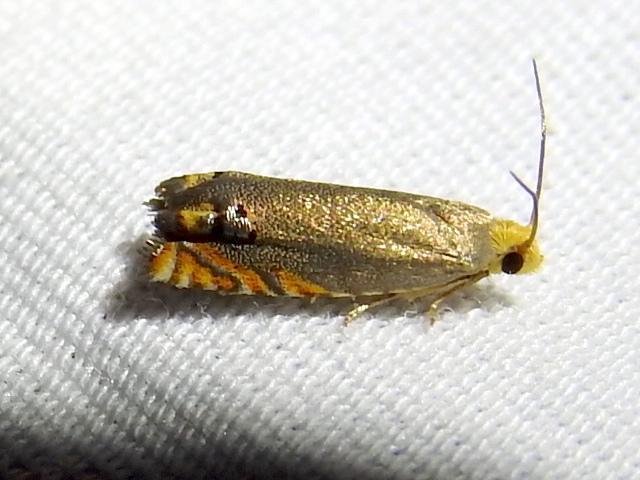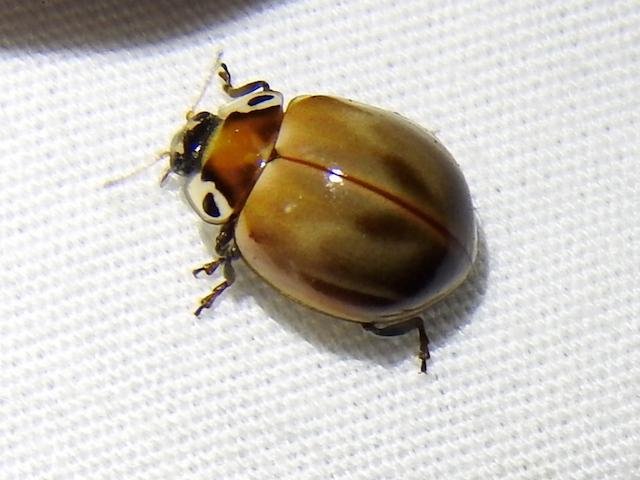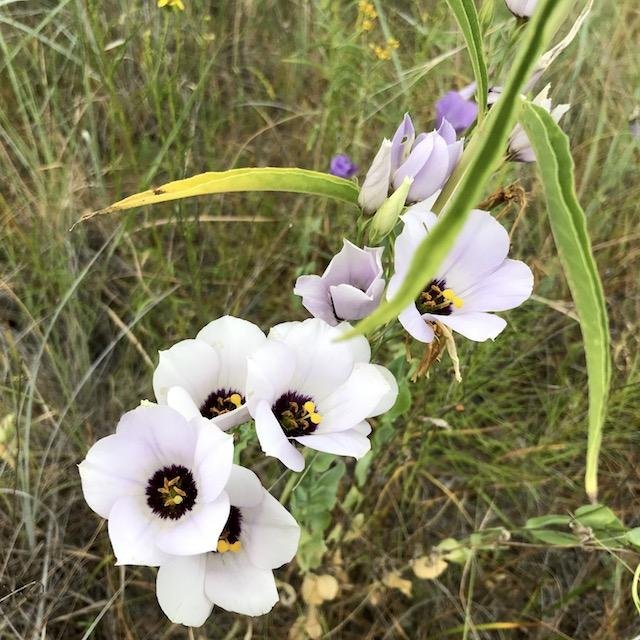Prairie Notes #175 - Silphium's Summer Splendor
Prairie Notes are monthly photo/journal observations from Tandy Hills Natural Area by Founder/Director, Don Young. They include field reports, flora and fauna sightings, and more, mixed with a scoop of dry humor and a bit of philosophy.
They are available free to all who get on the FOTHNA email list.
Silphium's Summer Splendor
Prairie Notes #175
July 1, 2021
01) Silphium's Summer Splendor
02) Field Report - June
03) New Species - June
04) Vandalism Report - June
05) PrairieSky / StarParty - July
06) In Praise of Texas Bluebells
07) People On the Prairie
08) Prairie Proverb - Christopher D. Stone
01) Silphium's Summer Splendor
Tandy HIlls has several of what I call, Iconic Species. That is, plants that are native, healthy prairie indicator plants and also tend to dominate their bloom season. The Trout Lily of early spring is one. Purple Paintbrush is another. The four Milkweed species, for sure. But the most Iconic species of summer are from the poetically named genus, Silphium. And we are damn lucky to have them at Tandy HIlls.
Lamenting the loss of American prairies in his book, A Sand County Almanac, the great naturalsit, Aldo Leopold, wrote:
"What a thousand acres of Silphiums looked like when they tickled the bellies of buffalo is a question never again to be answered, and perhaps not even asked."
Yes, we are indeed lucky to have Silphiums at Tandy Hills and a few other north Texas locations because most of their limited habitat is now fragmented or under concrete. They are also threatened with extinction in Tarrant County for those reasons and others.
There are two species of Silphium at Tandy Hills: S. laciniatum has a yellow daisy-like flower that typically blooms from July to September. S. albiflorum has a white flower and blooms from May to July. Although both are sometimes referred to by the common name, Compass Plant, S. albiflorum is generally known as White Rosinweed. This can get confusing since both species contain a white rosin and both have large, rough, deeply lobed leaves that tend to orient, north/south, like a compass. Both have tall, rigid stalks resembling Sunflowers with S. laciniatum growing up to 12'. S. albiflorum is typically shorter.
These amazing plants are members of the Aster Family. They flourish in hot weather. They are slow-growing but extremely long-lived perrenial, sometimes, reportedly 100 years or more. Taproots have been observed more than 50' long. The name "sylphium" translates as "big medicine" in several native American dialects due to its many medicinal uses. They are also an important food source for birds, bees and small mammals. (The name "Sylphium" comes from the ancient Greek word for a once highly prized and now-extinct North African plant that had a similar gum or resin.)
Both are native to the U.S. but have very different ranges. (See maps below) S. laciniatum's range extends into Canada and Mexico while S. albiflorum is endemic to north central Texas and thus a more limited range. It has been researched and studied extensively by Prof. Bruce Benz of Texas Wesleyan University. You can learn much more on the scientific side by checking out his 2015 report, Viability of Silphium albiflorum in Tarrant County. (An interesting factoid I gleaned from this report is that, with 1691 individual plants, Tandy Hills has the most of any area studied.)
The poetically named Sylphiums are an apt symbol of the Summer Solstice and are now blooming at Tandy HIlls. Come on in and contemplate what a thousand buffalo might have looked like running across the Tandy Hills with Silphiums tickling their bellies.
NOTE- For a fascinating and detailed look at the science side of S. albiflorum check out this recent presentation by Dr. Benz to the Fort Worth Chapter of Native Prairies Assoc. of Texas.
https://drive.google.com/file/d/1woxPdJuY9u0oZMdjGo2tppVHur7TgJDT/view
DY
02) Field Report - June
Despite the heat, I took several hikes at Tandy Hills in June. It's amazing what two weeks worth of late spring rain did for the prairie grasses and wildflowers. Additionally, due to the rain and muddy conditions there were very few photo-op tramplers leaving the wildflower meadows nearly pristine and lush with diversity. Milkweed pods are popping. The sky is full of dragonflies and barn Swallows. Techniclor sunsets nearly every day. Rabbits on the run. Tandy Hills is teeming with life that needs protection. Be a voice for this rare place by getting involved today at https://www.tandyhills.org/donate
03) New Species - June
There were 30 new species added in June, helping us pass the 1500 milestone and bringing the new count to 1520. All were observed and recorded by, Sam Kieschnick. Two new species of native Lady Beetles were found among many other strange and amazing insects. See a few notables below and the Tandy Hills iNat Project Page HERE: https://www.inaturalist.org/projects/tandy-hills-natural-area-stratford-...
04) Vandalism Report - June
In May, the rain kept the vandalism to a minimum. But in June, heat did the trick. Aside from a couple of 4-wheeler incidents and a couple of rogue meadow-trampling photographers there were fewer problems than usual. Let's hope the next round of rain showers and summer heat will keep it that way in July.
05) PrairieSky / Star/Party - July
We finally had a star party! Ablout 40 stargazers showed up including several family groups and lots of kids. There were 11 astronomers with telescopes on-hand to share their knowledge of the night sky. Pam Kloepfer, of the FW Astronomical Society offers the following program for the next event on July 17:
"As July opens, mark your calendars for July 11, 12, and 13! After sunset, head west to spot the blazing planet Venus. On these nights, Venus will keep close company with Mars and a thin crescent moon nearby. They will make a great binocular target! The constellation Lyra will be almost overhead, marked by the bright star Vega. Lyra is home to the Ring Nebula, a planetary nebula that can be seen with a telescope. In the south, a summer time favorite - humongous Scorpius will be visible with its reddish alpha star, Antares. Look for three stars that reach out like a claw. Many binocular and telescope targets can be found here by just scanning the constellation’s immense span, including beautiful open star clusters M6 and M7. The Moon will be at First Quarter the night of July 17, the perfect time to see craters and ridges along the lunar terminator with a telescope. We continue to wait patiently for long-expected planets Jupiter and Saturn to rise at “respectable" hours!"
06) In Praise of Texas Bluebells
Texas Bluebells (Eustoma exaltatum ssp. russellianum) are something special. They are the kind of flower one would expect to find in a Parisian flower shop not growing out of limestone rock on a Texas prairie in July!
Yet, here they are again. Year after year, all summer long they spread their purple mystic majesty across the Tandy Hills. They can look quite different depending on the time of day, conditions where they are found, current weather and color variants. Colors range from deep blue-purple to red-purple to pink-ish to white. They can stand up to the heat of summer like Silphium's but are far more delicate. Bugs like them as much as people. You can tell by the often clipped, eaten edges of the flowers and the little bugs asleep inside the cup.
Another common name is, Showy Prairie Gentian. The showy part is right on target. If you run across them at Tandy Hills or anywhere please resist the urge to pick them. Like many other prairie wildflowers they are in human-caused decline.
07) People On the Prairie
About 30 people took advantage of the two Nature Journaling sessions at Tandy Hills hosted by the FW Public Library and led by Debora Young.
08) Prairie Proverb - Christopher D. Stone
“I am quite seriously proposing that we give legal rights to forests, oceans, rivers and other so-called ‘natural objects’ in the environment — indeed, to the natural environment as a whole.”
Read his obit in the NY Times, HERE: https://www.nytimes.com/.../christopher-stone-dead.html...
Inspired by his work, I touched on the subject of Prairie Personhood in Prairie Notes #117 from 2016.:
Prairie Notes© is the official newsletter of Friends of Tandy Hills Natural Area, a 501 (c)(3) non-profit organization. All content by Don Young except where otherwise noted.








